Mandarin at home: planting and caring for citrus
Tangerines - one of the most favorite delicacies on New Year's Eve. The aroma of citrus cheers up, gives the body many useful microelements and pleases with a pleasant, sweet taste. It is possible to grow a "home" tangerine. Moreover, it is simple. The plant will decorate the interior of the room, refresh the air with delicate floral-citrus notes.
A small citrus tree was specially bred for growing in greenhouses, conservatories and rooms. A beautiful ornamental plant is able not only to brighten up the atmosphere of the room, but also to bear fruit. The process of growing a tangerine is very interesting, and what pride comes after the first tasted sweet fruit grown on your own! Growing conditions, planting and caring for citrus - all this can be found in a useful material for a plant breeder.
Content:
- What is the difference between indoor tangerine and wild
- Growing conditions
- Tangerine from the bone: planting rules
- Tangerine care
- Citrus pests and diseases
What is the difference between indoor tangerine and wild
Mandarin was originally native to China. In nature, it reaches a height of 4 to 5 m and grows into a lush tree. Citrus leaves are bright green, juicy and glossy. Interestingly, the plant changes its crown only once every four years. The plant blooms with white inflorescences in May. Mandarin begins to bear fruit at 4-5 years of age. Fruits are round in shape, slightly flattened in the center, bright orange or yellow, ripen in October. The peel is easy to peel, thin or firm, depending on the variety and species.
The tangerine tree belongs to the mulberry family and has many species and varieties.
The houseplant belongs to a group called "satsum". It is customary to grow them indoors. This is a frost-resistant tree, reaching a height of no more than 2 m. It begins to bear fruit at 3-4 years of age, the fruits are sweet or moderately sweet, depending on the variety in this group. Many gardeners grow tangerines from seeds they get from store-bought fruits. But such bones are not capable of producing sweet and tasty fruits in the future. The fruits from the store are tangerines from the "tangerine" or "noble" group, which are not grown at home, they need a full-fledged climate and a lot of space.
For tangerine cultivation at home, it is advisable to find seed material of the "satsum" group and a variety intended for indoor cultivation. So you don't have to bother with grafting a tangerine or a noble species planted and grown from a "store" seed. Having understood the intricacies of citrus, you can decide which tangerine to grow at home.
Growing conditions
Whichever type of tangerine the gardener chooses for cultivation, it is necessary to observe the conditions under which the plant will feel comfortable. For successful development, you need to choose a good place and provide the tangerine with lighting, humidity and choose soil composition.
Lighting and air temperature:
- Citrus fruits like bright areas where there is a lot of sunlight scattered light. Twelve-hour daylight hours are a prerequisite for a tangerine.
- At home, choose south-facing windows. Germinate the bones can also be on the windowsill, and protect the already grown sprouts from sunburn - put the flowerpot a little further from the window.
- In winter, keep your distance from radiators. Do not expose tangerine to dry air and battery currents. It is more expedient to choose a place near the wall of the room, not far from the window, but at a sufficient distance from the radiators. Lighting plays an important role in growing a plant and should not be ignored.
- The room temperature should not fall below 15 ° in winter and below 18 ° in summer. Varieties of the group "satsum", "tangerines" and "noble" can withstand temperature extremes up to -7 °.
Citrus is very fond of nutritious soils rich in trace elements. And for landing seeds need one mixture, and when transplanting adult plants, another.
The main condition is good drainage and soil nutrition.
For seeds and their germination, a substrate is prepared from sod land, sand, humus and leafy soil. The ratio is 2: 1: 1: 1. You cannot add peat to the soil, it acidifies the soil. For a tree aged one year or more, a substrate is prepared from turf, humus, sand, clay and leafy earth. The ratio is 3: 1: 1: 1: 1. If there is no clay available, it's okay. This is not an essential part of the substrate. Having properly prepared the soil, you can safely plant seeds or replant an already matured tree.
It is very important to provide the plant with sufficient air humidity. This condition is rather difficult to implement at home, especially if the heating system is equipped with conventional radiators. Experienced growers place containers of water next to the tangerine pots, and in winter they put wet towels on the radiators. A prerequisite is a regular sprinkling procedure - this will maintain high humidity and prevent citrus from drying out. As often as possible, you just need to spray water into the air in the room where the tangerine is located.
Tangerine from the bone: planting rules
Mandarin seeds are the most common way breeding plants. You can always get it from a purchased fruit or purchase it from a garden store. Seedlings are bought less often. The process of growing an exotic fruit from a seed is very interesting. It is always pleasant to know that the resulting fruit was grown from scratch - from the seed.
Planting the bone:
- The available seed must first of all be prepared. To do this, the bones are placed in wet gauze for several days. Seeds should swell and hatch slightly. So they will rise faster, after 3-4 weeks, and not after the prescribed 5-6. Mandarin takes a long time to grow. Therefore, be patient from the beginning.
- Lay a layer of drainage in a flowerpot or any other container. It can be expanded clay, broken brick or pebbles.
- The pot is then filled with a growing medium (see above).
- Plant the bone shallowly - to a depth of 1-2 cm.
- Cover the container with plastic wrap to create a greenhouse climate.
- The seed dish can be placed on the windowsill.
The air temperature must be at least 15 °. The soil must be periodically moistened, but not flooded. Remove the condensation from the film so that the young sprouts are not struck by the fungus. Initially, the bones soaked in gauze will sprout in 3-4 weeks.
Tangerine care
Plant care is simple and requires minimal effort, mainly related to watering and application fertilizersth. Mandarin will not cause trouble if all growing conditions were initially followed and provided.
Watering:
- During the summer, citrus should be watered and sprinkled frequently. Do not allow overdrying of an earthen coma.
- Make sure that the soil is evenly moist, but not waterlogged.
- For glaze use only settled, warm water. You cannot take it straight from the tap.All sediments that are invariably present in the water will settle in the soil. This adversely affects plant health and soil nutrition.
- Sprinkling procedures are also carried out with warm, settled water. In the hot season, the plant is sprayed 1-2 times a day so that after that direct sunlight does not fall on the leaves.
- In winter, watering and sprinkling are reduced by 2-3 times.
- Top dressing:
- In spring, it is necessary to introduce into the soil mineral and organic fertilizers... The first feeding is carried out after 5-6 full-fledged leaves have formed on the sprout. Better to give preference to mineral complexes for citrus fruits. Well-rotted humus is introduced from organic matter.
- In the fall, feeding is reduced.
- In winter, it is better to refrain from them.
It is important to fertilize before flowering - May-June and before fruit ripening - September. Always observe the measure and adhere to the gardener's golden rule: fertilizers are applied with nitrogen compounds in spring, and closer to autumn with phosphorus-potassium compounds.
Every year, in the spring, the sapling should be transplanted into a larger pot.
After 8 years of life, the mandarin is transplanted once every 2-3 years. Way transplants - transshipment of an earthen clod. The fresh substrate is distributed in a circle, in a free space along the diameter of the pot. Young plants should be moved from one flowerpot to another with extreme care, as the mandarin root system is very fragile. Many gardeners do vaccinations young tree for sweet and tasty fruits. However, if the variety and group are selected correctly, this procedure is not necessary. Basically, it is provided if the seeds were taken from a purchased fruit of an unknown variety and group.
Citrus pests and diseases
At home, mandarin is more likely to affect spider mites, scale insects or mealy worms. Pests removed with a cotton swab, and the plant is treated with either plant solutions or chemical insecticides. Solutions can be prepared from garlic and soap shavings, as well Luke... As for chemicals, Fitoverm or Aktellika will help here. Remember that the use of chemistry is justified in case of severe damage to the plant, which rarely happens at home.
Pests are more likely to attack tangerines when it is hot in the room and there is low humidity.
In case of wrong glaze the leaves of the tree become stained and fall off. Therefore, it is very important to water the citrus in a timely manner, but not to swamp the soil. Otherwise, the mandarin no longer has enemies and diseases.
Growing indoor tangerine at home is easy if the rules are followed leaving, the tree has enough light and moisture. For 3-4 years of life of the exotic, the first tasty fruits will appear - the pride of the plant breeder. Good luck growing your tangerine!
More information can be found in the video:



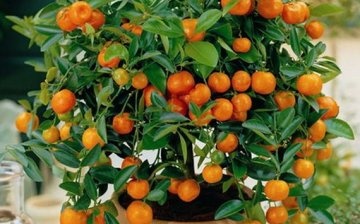
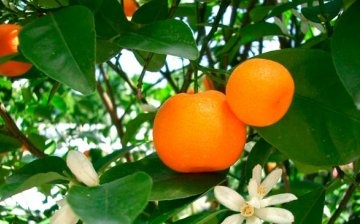
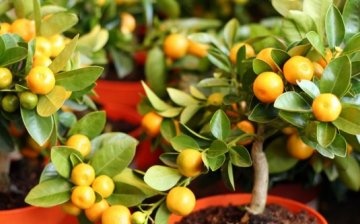
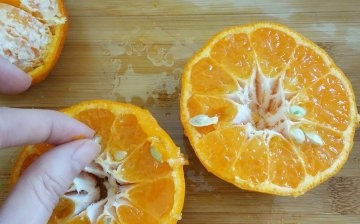
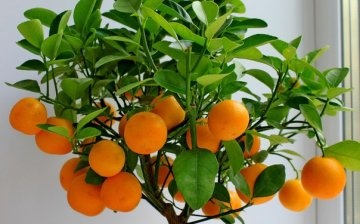
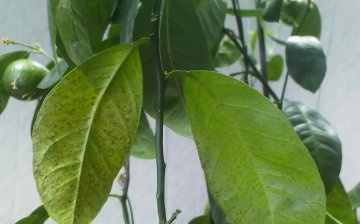






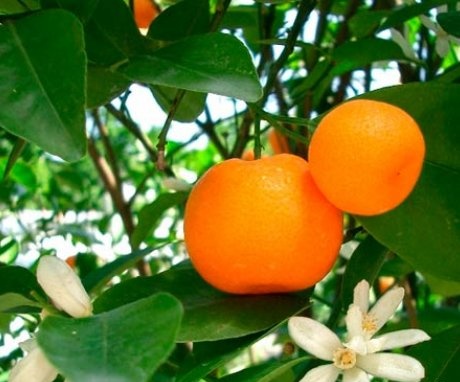
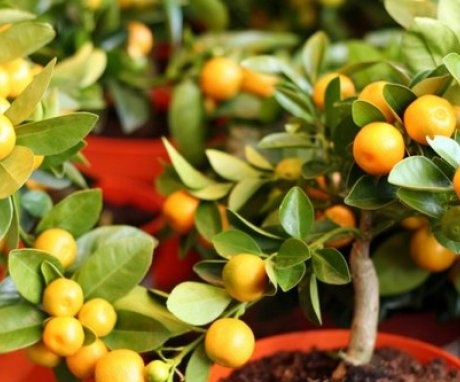
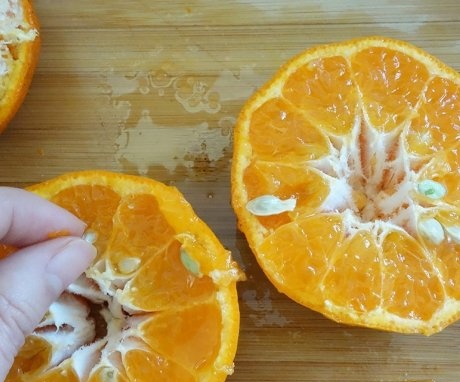
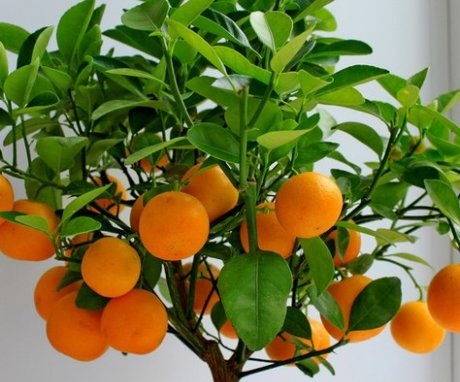

Growing a tangerine at home is not an easy undertaking, our tree died this winter for 2 years, and all due to the fact that in winter there were problems with gas and heating, the temperature in the room did not drop below 12, but this was already enough for 5 days when the heating was turned on, the tree reacted strangely to the heat, maybe there was just a sharp drop, but in general the leaves turned yellow, withered and the 2-year labor was gone!
One could try to grow it, we do not have interruptions with heating in winter, and due to the lack of sunlight, you can think of something, but experiments with lemon have shown that even if the fruits appear, they will be extremely sour.